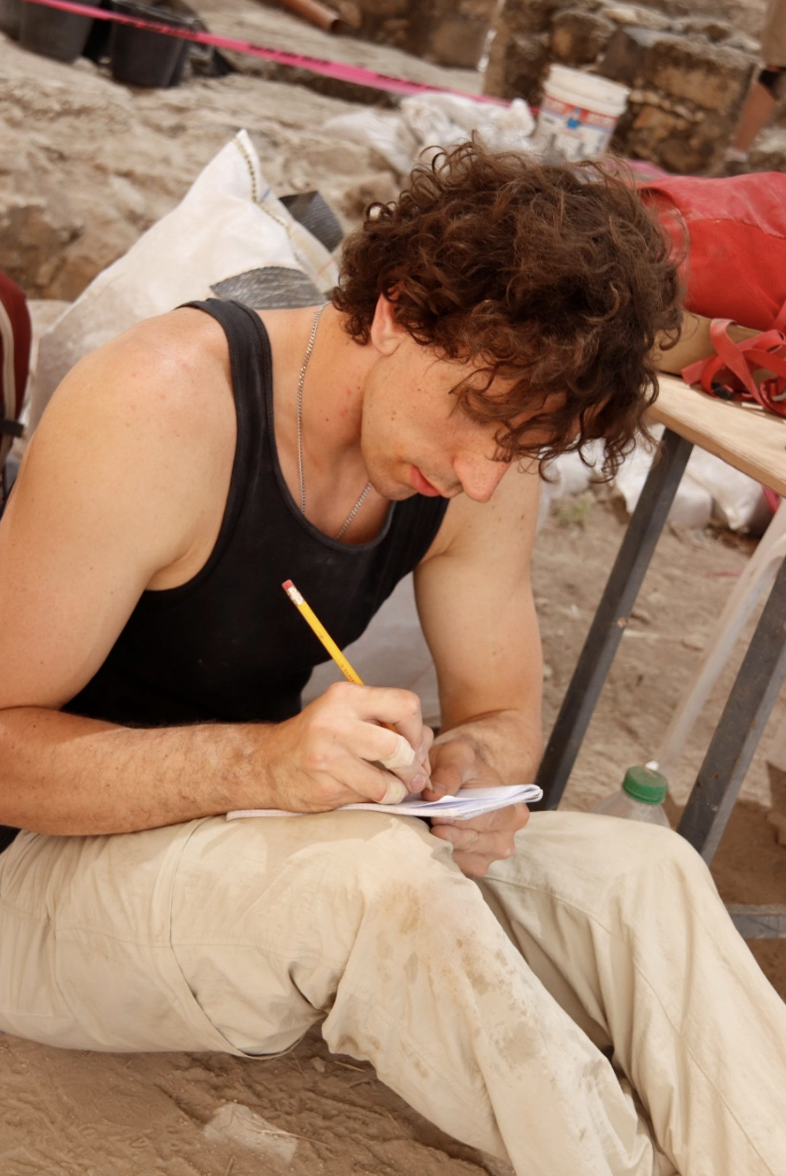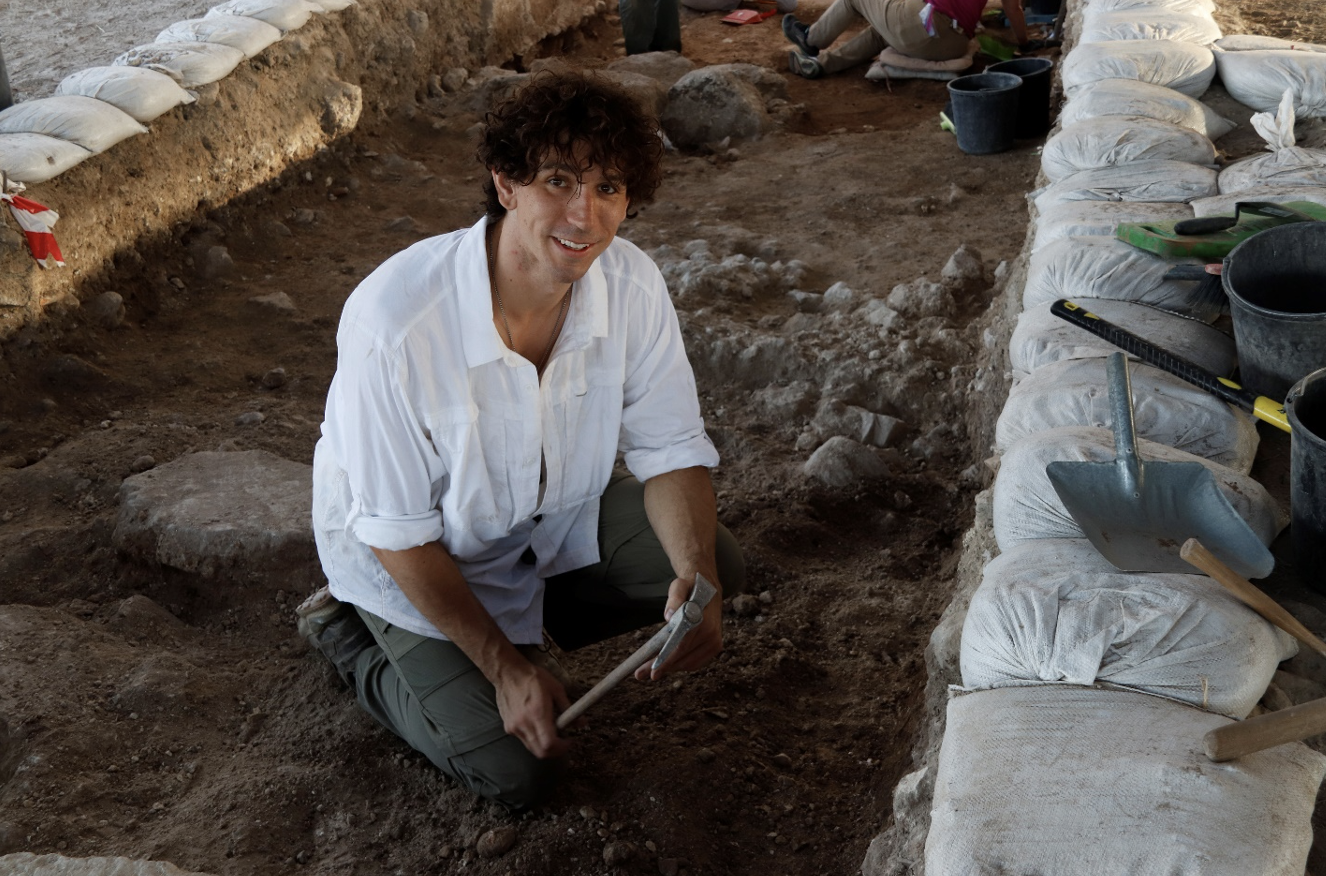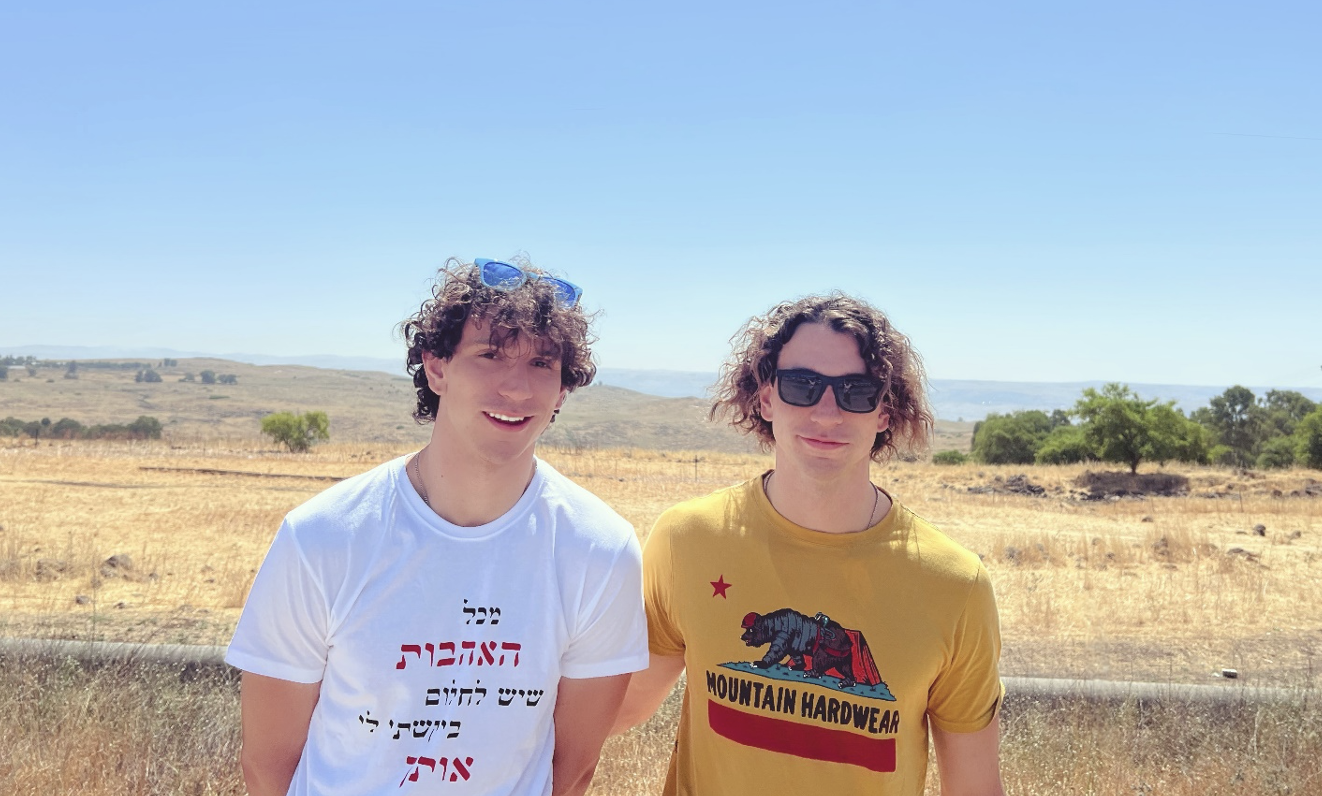
My Experience at Huqoq
Zachary Griffith, Eric and Carol Meyers Fellowship recipient
This summer I was able to attend the Huqoq Field School in Israel. I am grateful to ASOR for this scholarship, allowing me to attend this excavation. This was my first excavation outside of the United States, and by far the largest excavation that I have been a part of. During the excavation season I learned a great deal from the staff and supervisors, including Dr. Jodi Magness of the University of North Carolina at Chapel Hill and my Classics Professor at the college I attend, Austin College, the architecture specialist Dr. Martin Wells. Once again, I am thankful for the support of ASOR in making this experience possible.
I am grateful to have been a part of such an important excavation. The main focus of our excavation at Huqoq was the Late Roman synagogue and the Medieval synagogue building. The Huqoq excavation has gained much notoriety for the beautiful, well-preserved, and unique mosaics that were discovered in the Late Roman synagogue. Apart from the emphasis placed on the mosaics, there was much emphasis placed by the staff and supervisors of the significance of the material that can give a date for the Late Roman synagogue. This was especially evident when we visited various other synagogues in Northern Israel, such as those at Capernaum and Sepphoris. At lectures and hearing discussions between various professors at several of these sites, the magnitude of importance for the dating material for our excavation of the Late Roman synagogue at Huqoq was revealed. This dating material is so important to archaeology in this region due to conflicting theories over how the Christianized Roman Empire effected synagogue building and prosperity of the Jewish people under the Roman Empire, as such discussions have led scholars to give dates to synagogues that can differ by a degree of hundreds of years. It was great to be a part of an excavation that by itself is very significant, but that also could also have wide reaching implications for an entire region during the Roman Period.
As a part of the Huqoq excavation I was assigned to the area 3000 North, which was supervised by Dr. Rangar Cline of Oklahoma State University. This was the area that consisted mostly of the Northwestern sections of what was once the Late Roman synagogue and the Medieval synagogue. 3000 North was also where previously unexcavated mosaics were uncovered during this season. In 3000 North I learned a great deal about excavation techniques. Also, due to our proximity to the Late Roman mosaics, and the emphasis placed on finding material to date parts of the site, I frequently sifted the material we excavated. Sifting could be very exhilarating, such as when we would find artifacts that could possibly be used as dating evidence, but also heartbreaking, such as when tesserae was discovered, showing that sections of the Late Roman synagogue’s mosaic would not be preserved.
I greatly value the work I did under the direction of architecture specialist. Dr. Martin Wells. I assisted Dr. Wells by moving, washing, and recording various architectural fragments of significance to the excavation. Handling these pieces and gaining first-hand experience from Dr. Wells, I was able to learn a great deal more about the architecture and construction techniques in all phases of the site that we excavated. What is most memorable to me about Huqoq was how rewarding the process of reconstructing the Late Roman and Medieval synagogues could be’ even though it was a very difficult process. This can be highlighted by the way in which the builders of the Medieval synagogue reused material from the Late Roman synagogue, and it is from this reused material that we can gain more evidence of what the Late Roman synagogue may have looked like. In addition to all of the fieldwork, spending time with all of the individuals with the same passion for archaeology was amazing. I will have future colleagues and friends for life.
Zachary Griffith is a Senior at Austin College, where he is majoring in Anthropology, Classics, and History. He also plays goalie for the water polo team at Austin College.
American Society of Overseas Research
The James F. Strange Center
209 Commerce Street
Alexandria, VA 22314
E-mail: info@asor.org
© 2023 ASOR
All rights reserved.
Images licensed under a Creative Commons Attribution-NonCommercial-ShareAlike 4.0 International License
COVID-19 Update: Please consider making payments or gifts on our secure Online Portal. Please e-mail info@asor.org if you have questions or need help.



